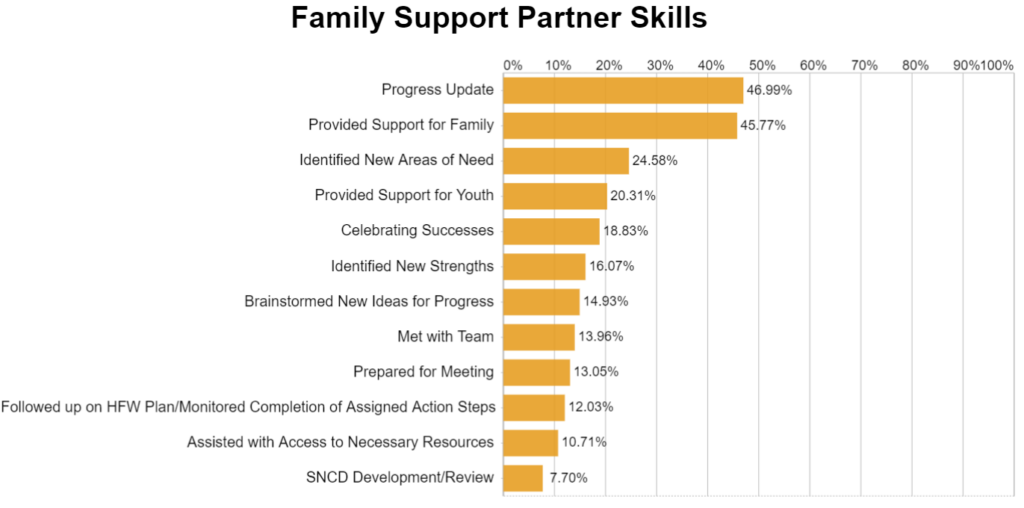Pennsylvania’s HFW model is unique in that the team includes both a Youth Support Partner (YSP) and Family Support Partner (FSP) that function in equal partnership with the Facilitator.
The Family Support Partner is a position designed to provide intensive levels of direct support for families who need it. These positions are a distinctly different job than the HFW Facilitator and Youth Support Partner, but work closely with the them to obtain outcomes at the family level.
The Family Support Partner, in general, but not always, is a graduate of the HFW process, or has personal experience raising a child with involvement in one or more of the child serving systems (Behavioral Health, Juvenile Justice, Child Welfare, Physical Health, etc.). Their personal experience gives them a set of skills that promote trust and learning and provides support to the family to accomplish various tasks that are agreed upon on the plan. They are there to support the family as a team member when needed, model strength-based approaches, and share experiences as teachable moments when needed.
The motto for this position is “Do For, Do With, Cheer On,” meaning that at times the Family Support Partner will help the family with direct support, do with the family and walk beside them as they learn to do for themselves, and cheer them on when they are able to do the tasks without support.
The Family Support Partner has specific skills developed to support the family build positive supportive relationships (from current friends and family or relationships that need repaired) and engage those people on their team.

Data displayed on this page was last updated October 2021.
